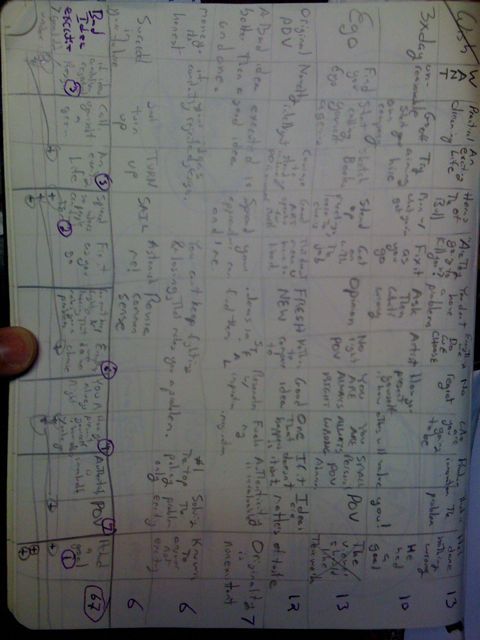“Whatever you think, think the opposite” by Paul Arden. He died just last month and at his website you can read many condolences and editorials.
I think I take notes a little bit differently than other people. It seems to help me remember better.
In High School AP Biology class I took all my notes in a way similar to this and never had to study got an A and pretty much could recount word for word what the teacher said.
Now, with books like Arden’s I am not looking to get an A and there is no test. My goal is to try to synthesize the book in a way so I can first understand it and then take action.
Below you can see my notes. That is how I took them. The image is on it’s side. Along the bottom of the page you can see how I created a voting system, in which I wrote the most important idea from each column, then I did forced comparisons and decided between each adjoining pair, continuing that process until I came up with the most important idea from the entire book. Having it all on one page allows me to do decomposition and traceability through each of my decisions back to each individual idea from the book. Kind of a gestalt view.
I don’t know if this would work for anyone else. I would be most curious if anyone else out there takes notes in the manner. It isn’t the Cornell Note Taking System, but it works for me.
In think also you can see the strong influence of a grid system. I have been talking alot with Todd Zaki Warfel of messagefirst fame about Grids and borrowing many grid books from his excellent library.
Tags: Book, notes, Paul Arden, Visual Thinking, Whatever you think think the opposite
